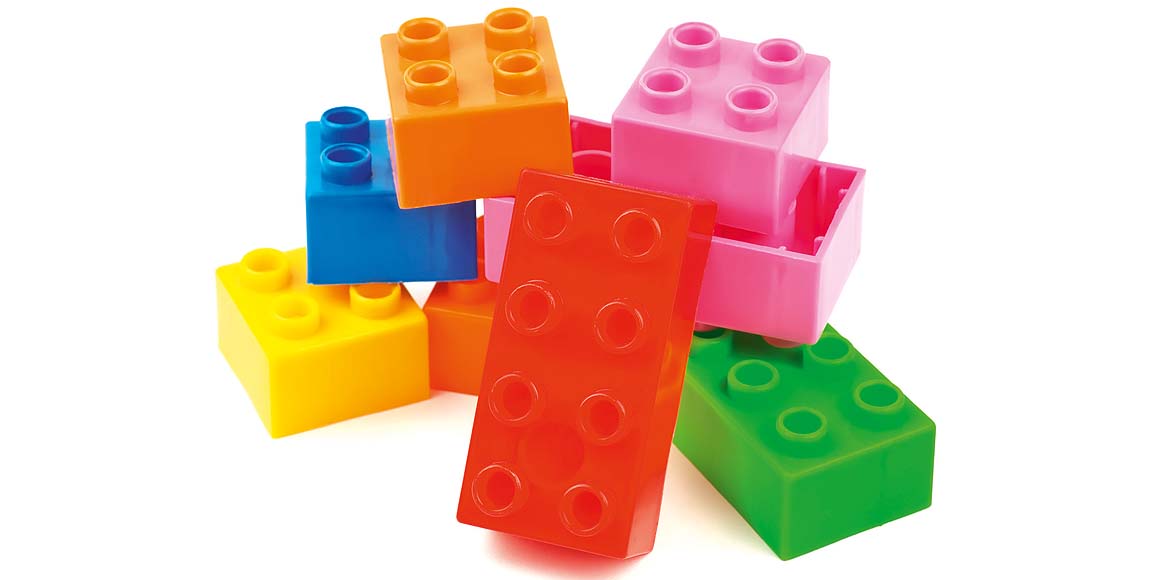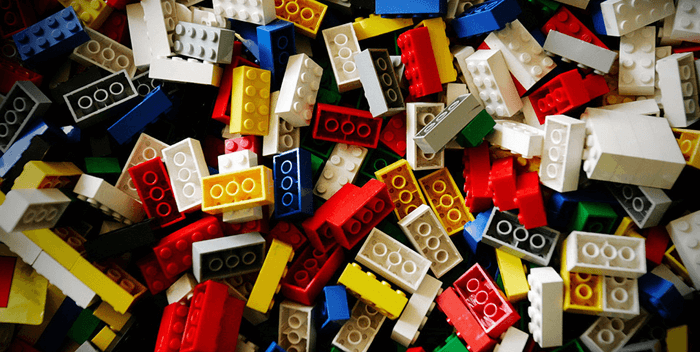Yes, Lego bricks are produced using injection molding, a process ensuring precision, consistency, and high-quality in each piece.

Introduction
The world of construction toys was forever changed with the introduction of Lego bricks. These iconic toys, recognized by their vibrant colors and unique interlocking system, have not only served as playthings but also as tools of imagination and creativity for people of all ages.
Brief history of Lego bricks
Originating from the small town of Billund, Denmark in the 1930s, Lego started not as the plastic bricks we know today but as wooden toys created by a carpenter named Ole Kirk Christiansen. The name “Lego” was derived from the Danish phrase “leg godt”, which means “play well”. However, it wasn’t until 1949 that the company produced its first plastic bricks, known then as “Automatic Binding Bricks”.
Evolution of Lego manufacturing
Initially, Lego bricks were made from cellulose acetate, a material that didn’t provide the durability and clutch power that Lego bricks are known for today. Recognizing the need for a better material, in 1963, Lego switched to using acrylonitrile butadiene styrene (ABS) plastic. This pivotal decision led to the high-quality bricks that have become a hallmark of the brand. Modern manufacturing processes also mean that Lego bricks produced today are more precise than ever. The company’s dedication to maintaining this level of precision is evident in its state-of-the-art manufacturing facilities, which utilize advanced machinery and techniques to ensure each brick meets their rigorous standards.
Lego’s Manufacturing Process
The production of Lego bricks is a fascinating blend of cutting-edge technology and stringent quality standards. As one of the most recognized and cherished toy brands globally, Lego has perfected its manufacturing process over the years to ensure that each brick is of the highest quality, consistent, and fits perfectly with another brick from anywhere in the world.
Overview of Lego’s production
- Material Selection: At the heart of every Lego brick is ABS plastic, known for its strength, durability, and slight flexibility. This choice of material ensures that the bricks are both long-lasting and safe for play.
- Color Mixing: To achieve the vibrant range of colors seen in Lego sets, colored granules are mixed with the clear ABS plastic. This ensures a consistent color tone throughout each brick.
- Molding: This is where the magic happens. Melted ABS plastic is injected into molds to form the iconic Lego brick shape. With over 60 billion bricks produced annually, this step is continuously optimized for efficiency.
- Cooling and Ejection: Once the brick is formed, it undergoes a rapid cooling process to solidify the plastic. The brick is then ejected from the mold, ready for the next steps.
- Testing and Quality Control: Lego’s commitment to quality is unparalleled.
- Packaging: After passing quality checks, the bricks are sorted, counted, and packaged into the various Lego sets we see on store shelves. Advanced robotics and automation play a crucial role in this stage, ensuring accuracy and efficiency.
The role of injection molding in Lego production
Injection molding is the backbone of Lego’s production process. It’s the technique that allows the company to produce billions of bricks annually with exceptional precision. The method involves melting ABS plastic granules and injecting them into steel molds under high pressure. This process ensures that each brick is identical in size, shape, and quality. It provides:
- Consistency: Each brick is virtually identical, ensuring that they can interlock perfectly, no matter where or when they were produced.
- Efficiency: The injection molding process is quick, allowing Lego to produce a staggering number of bricks daily.
- Detail: The sharpness and detail on some Lego pieces, especially those with intricate designs or logos, are achievable thanks to the precision of injection molding.
Advantages of Injection Molding for Lego Production
Injection molding is at the heart of Lego’s manufacturing prowess. Over the years, the company has fine-tuned this process to ensure that it produces billions of Lego bricks that live up to the brand’s high standards. Let’s delve deeper into the distinct advantages of this technique.
Precision and repeatability
- Tolerance Levels: The precision of the injection molding process allows Lego to achieve incredibly tight tolerance levels, up to 0.002 millimeters. This ensures that Lego bricks produced in different factories, at different times, can still fit perfectly together.
- Consistent Quality: With such a precise process, each Lego brick is practically identical to the next. This repeatability ensures that whether you buy a set today or ten years from now, the quality remains the same.
- Detail Reproduction: Whether it’s the fine lines on a Lego minifigure’s face or the intricate patterns on some specialty bricks, injection molding captures these details flawlessly every time.
Scalability and mass production
- Speed: A typical injection molding cycle for producing a Lego brick takes about 10 seconds. This swift production rate means that a single mold can produce upwards of 8,640 bricks in a 24-hour period.
- Volume: With multiple molds operating simultaneously across their factories, Lego produces an astonishing 60 billion bricks annually, demonstrating the mass production capabilities of injection molding.
- Cost Efficiency: The rapid production speed combined with the ability to produce vast quantities translates to significant cost savings.
Material efficiency and waste reduction
- Material Use: ABS plastic, the primary material for Lego bricks, is used efficiently in the molding process, with minimal wastage. This efficiency not only reduces costs but also ensures sustainability.
- Recycling and Waste Minimization: Any excess material or defective bricks are ground up and reused, ensuring that waste is kept to an absolute minimum. This process contributes to both cost savings and environmental responsibility.
Quality Control in Lego Injection Molding
Quality is a cornerstone of the Lego brand. With millions of children and adults relying on the fit and finish of each Lego brick, there is no room for error. The company has, over the decades, put in place rigorous quality control measures to ensure that every single brick upholds the brand’s reputation.
Lego’s strict quality standards
- Tolerance Levels: Lego maintains an exceptionally tight tolerance level of 0.002 millimeters for its bricks. This ensures a perfect fit every time, whether you’re combining bricks from a set produced decades ago with a set produced today.
- Defect Rate: The company’s quality control standards are so rigorous that the defect rate is less than 18 bricks in every million produced. This equates to a 99.9982% success rate, a remarkable achievement given the scale of their production.
- Consumer Feedback: Lego values feedback from its user base.
Techniques and tools for ensuring consistency
- Random Sampling: Every hour, random samples are extracted from the production lines.
- Automated Inspection: Advanced machines equipped with cameras and sensors inspect each brick for defects, anomalies, or inconsistencies in color, shape, and size.
- Manual Inspection: While automation plays a pivotal role, the human touch is irreplaceable. Trained professionals visually inspect random bricks, ensuring that they meet Lego’s stringent quality standards.
- Strength and Durability Tests: The data from these tests provides insights into the quality of the material and the effectiveness of the molding process.
- Fit Tests: To ensure that the bricks interlock perfectly, they undergo fit tests.

Environmental Impact
In an era where environmental sustainability is paramount, the manufacturing industries, including toy production, are under increasing scrutiny. Both the injection molding process and companies like Lego have significant roles to play in ensuring that their operations have minimal negative impacts on the environment.
The sustainability of injection molding
- Material Efficiency: One of the advantages of injection molding is the efficient use of materials.
- Energy Consumption: Modern injection molding machines have become more energy-efficient. By optimizing cycle times and using advanced technologies, the energy consumption per molded piece has reduced over the years. However, it’s essential for manufacturers to continually invest in the latest equipment to ensure energy efficiency.
- Waste Reduction: The precision of injection molding means there’s less defective waste. Additionally, with the capacity to recycle and reuse excess plastic, the process can substantially reduce waste compared to other manufacturing methods.
- Water Usage: Manufacturers are now adopting closed-loop water cooling systems, reducing water waste by continually recycling and reusing the water within the system.
Lego’s initiatives for environmental responsibility
- Bio-based Plastics: Lego has committed to using sustainable materials in its products. By 2030, the company aims to produce its toys using bio-based or recycled materials. They’ve already introduced bricks made from sugarcane-based polyethylene, which is a sustainable alternative to traditional plastics.
- Packaging: Lego is working towards making all its packaging 100% sustainable by 2025.
- Carbon Footprint: Lego achieved a significant milestone in 2020 by balancing 100% of its energy use with energy from renewable sources.
- Waste Management: At Lego factories, any brick that doesn’t meet their quality standards doesn’t go to waste.
- Product Longevity: One of the often overlooked aspects of Lego’s environmental commitment is the durability and longevity of its products.


